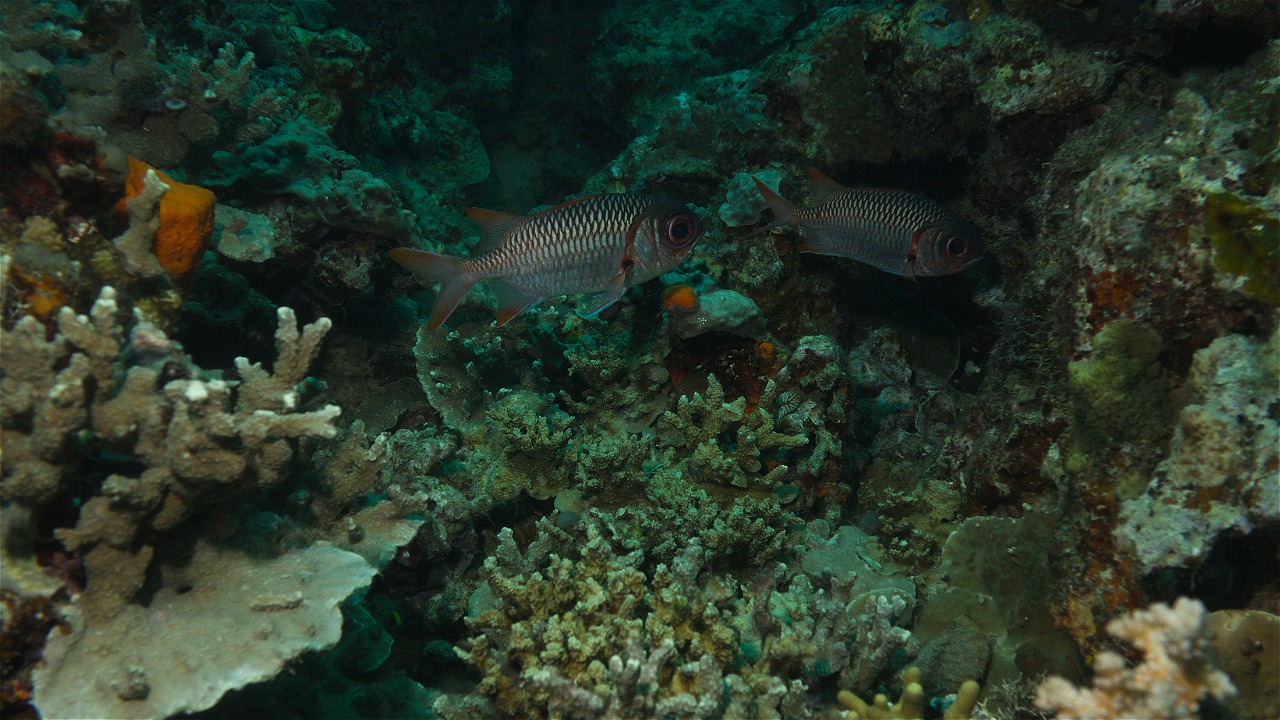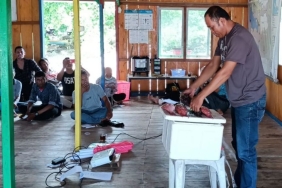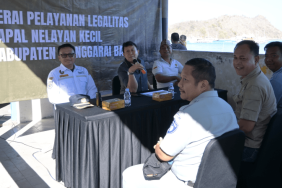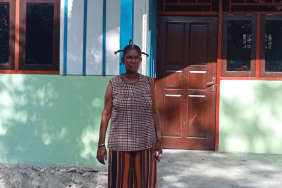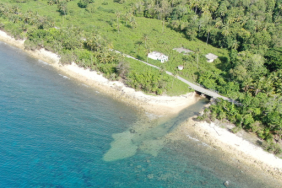HADING MULUNG: OBSERVING THE CONDITION OF FIELD ISLAND WATERS AFTER 1 YEAR OF UTILIZATION BAN
By: Nisa Syahidah (Communication & Campaign, Sunda Banda Seascape, WWF-Indonesia)
Translated by: Evert
The galasorong sea dance welcomes the speedboat that brings the members and representatives of WWF-Indonesia team, BKKPN (National Aquatic Conservation Office) Kupang, DKP (Department of Marine and Fisheries) of NTT Province, and PSDKP (Supervision of Marine and Fishery Resources) Kupang. Our ship almost reaches Baranusa Port, Pantar Barat, Alor and we can see the dancers from Ilu and Piringsina villages wearing Baranusa woven fabrics as they are shouting lyrics about victory from a ship decorated with coconut palms.
""This welcome dance is specifically performed at the sea, and it symbolizes victory,"" explains Mr. Bachrun, the Head of Ilu Village, during a banquet at Mr. Raja Baranusa's house. ""In the past, this dance was performed when Baranusa warlords defeated their enemy,"" he continues.
Just like the theme of galasorong, the people of Baranusa is celebrating victory of their success in reviving their local wisdom of protecting the sea. For more than a year they have restrained themselves from taking resources in the waters of Lapang Island, which became the location of hading mulung (closing). Now, the time has come for Baranusa people to reopen the sea with hoba mulung ritual.
""Pulau Lapang is the granary, the storehouse of Baranusa Village. The island provides us the resources by which we feed and educate our children,"" says Sangaji Gini, a traditional elder of Sandiata tribe. Sandiata is a sea-guarding tribe under the order of Baranusa King. With its brightness and dynamic current, the waters of Lapang Island is an ideal location for coral reefs, those are homes for fish. Sangaji Gini stares at the blue sea beside us and recalls his youth as a fisherman, catching reef fish and looking for lola (Trochus), sea cucumbers, slugs, cardamom, and even sea urchins when the sea was meti (low tide). He has witnessed how the abundance of fish in the sea declines from time to time.
According to a 2015 WWF-Indonesia coral ecosystem health survey in Lapang Island, the abundance of important invertebrate species has declined due to high harvesting intensity: the locals either consumed or sold them. Therefore, hading mulung is conducted to give the sea a rest hence the biodiversity in it can be maintained.
""We mulung this location, most people here obey the rule so they do not harvest the sea,"" says Mr. Mashuri AP Uba, the Head of West Pantar Sub-district. He is constantly pushing the local wisdom hading mulung to be re-enacted, after a long pause of 20 years.
This information is confirmed by the results of observation on coral reef ecosystem conducted by WWF-Indonesia in October 2017, a year after hading mulung was re-enacted on October 30, 2016. Comparing the data of 2015 and 2017 observations, WWF-Indonesia analyzed the health of the coral reef ecosystem. The indicators were the high percentage of coral cover, the abundance of target fish and important invertebrates such as cardamom, kima (Tridacna), lobsters, lola (Trochus), snails and sea cucumbers.
The results shown that the average total score of the important invertebrate existence in the hading mulung site was increased from 231.25 individual / hectare in 2015 to 276.67 individuals / hectare at the end of the hading mulung period.
""We gathered data from 5 observation points in the waters of Lapang Island: 3 were within the hading mulung zone, while the other 2 were outside of the area,"" says Khaifin, the Biodiversity Monitoring Coordinator of WWF-Indonesia.
""An increase in the number of important invertebrates in hading mulung location indicates local fisherman’s compliance to their customary rules,"" he explains. On the other hand, the number of important invertebrates outside the hading mulung location was found to decrease dramatically, due to the switch of harvesting to that area. The condition of the coral reef ecosystem in hading mulung location was also better than in the outside.
The management of customary-based conservation areas through hading mulung tradition is proven to be effective in maintaining biodiversity with the active involvement of the local community. However, the enactment of hading mulung still leaves an important note. WWF-Indonesia noticed the tendency of declining in the condition of the coral reef ecosystem, both inside and outside the mulung area, thus might be a sign that some people still performed harvesting activities during the hading mulung period.
The socialization of hading mulung enactment has to be intensified, especially to fishermen from outside the village. Stricter collaborative surveillance system also needs to be encouraged, both from the customary community and the government. This year the hading mulung will be re-enacted, and it has to better this time.

